Mexico City, Mexico —(Map)
Archeologists working near Mexico City have discovered the bones of about 60 mammoths in an area that was a lake long ago. The scientists believe the area could hold the remains of hundreds more mammoths.
Mammoths were large beasts with trunks and tusks which are closely related to our modern day elephants. Mammoths died out in North America around 10,000 years ago.
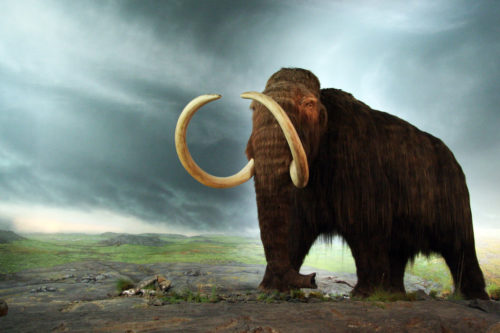
(Source: jan zeschky, via Flickr.com.)
The mammoth bones were found in an area called Xaltocan, which was a shallow lake for thousands of years. Scientists believe the area around Xaltocan produced a lot of grasses and reeds. Over 10,000 years ago, mammoths used to visit the lake to eat these plants – as much as 330 pounds (150 kilograms) a day.
The lake has been dried up for centuries. Much of Mexico City is built on top of it. In recent years, one part of the ancient lake has been used as an airbase for Mexico’s army. Now the army airbase is being torn down and a new international airport is being built.
A team of archeologists is taking advantage of that change to do some digging in the area where the airbase was.
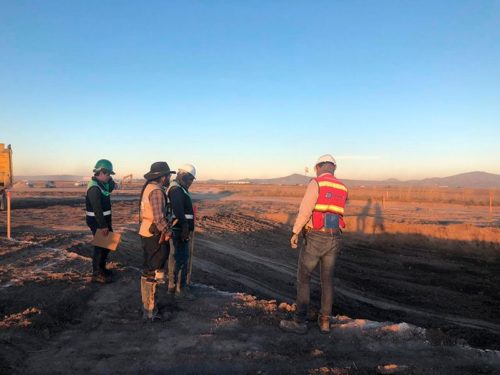
(Source: National Institute of Anthropology and History.)
Scientists began digging at the airport last October. They didn’t have to wait long for results. In less than six months, they have turned up the remains of 60 mammoths.
“There are too many. There are hundreds,” says Pedro Sánchez Nava. He’s an archeologist who works with the National Institute of Anthropology and History. The scientists have discovered skeletons of males, females, and younger mammoths. It’s likely many got stuck in the mucky lake bottom.

(Source: National Institute of Anthropology and History.)
The area is well known for its history with mammoths. Just last year, mammoth bones were discovered while digging for a landfill about 6 miles (10 kilometers) away from the airport.
At the landfill location, scientists found two large pits that had been dug by humans as mammoth traps. The traps must have worked, since they held the bones of at least 14 mammoths. Those bones were about 15,000 years old.
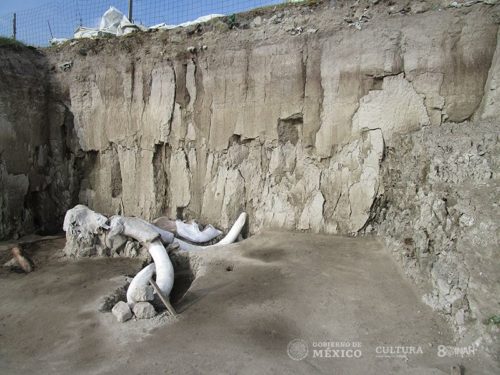
(Source: Luis Córdoba Barradas, National Institute of Anthropology and History.)
One big difference between the bones discovered in the mammoth pits and the ones the scientists are finding now is that the bones from the mammoth pit showed signs of cuts made by humans. Scientists believe that humans used the pits to trap and kill the mammoths, then cut them up for food and clothing.
So far, none of the mammoth bones found at the airport location show signs of cutting. Still, scientists believe that humans could have used the lake as a trap for the mammoths. “It’s possible they may have chased them into the mud,” says Mr. Sánchez Nava.
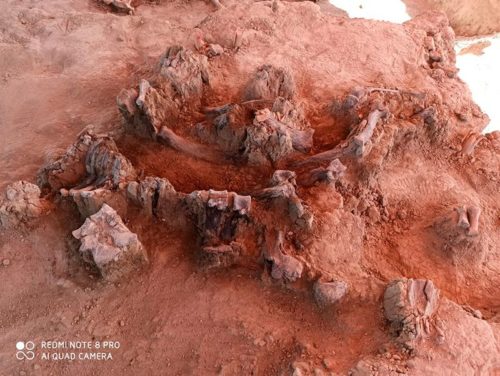
(Source: National Institute of Anthropology and History.)
The scientists have also discovered the bones of 15 people – probably farmers – who were buried in the area over 500 years ago. The people were buried with pots, bowls, and clay figures. One of the figures looks like a dog.
Mr. Sánchez Nava believes the archeologists may continue to find as many as 10 mammoths a month. But the dig will need to end by 2022, when the airport is scheduled to be completed.
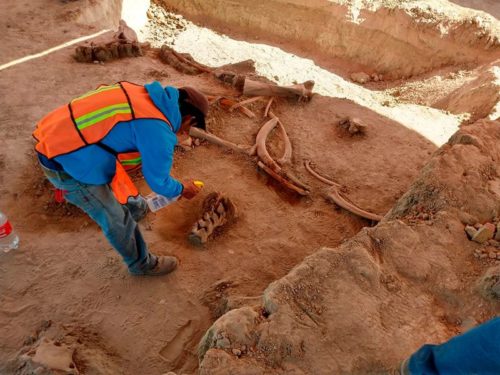
(Source: National Institute of Anthropology and History.)
😕
This map has not been loaded because of your cookie choices. To view the content, you can accept 'Non-necessary' cookies.
